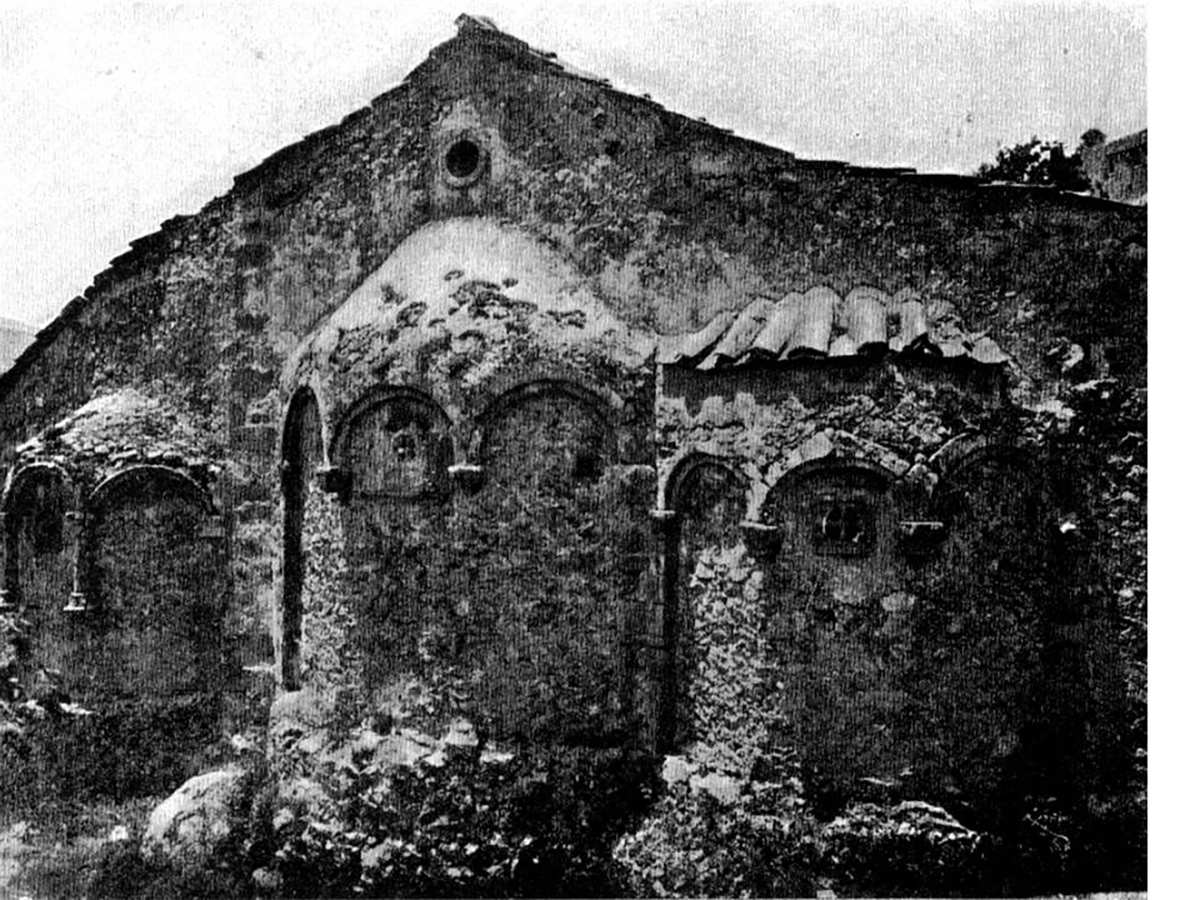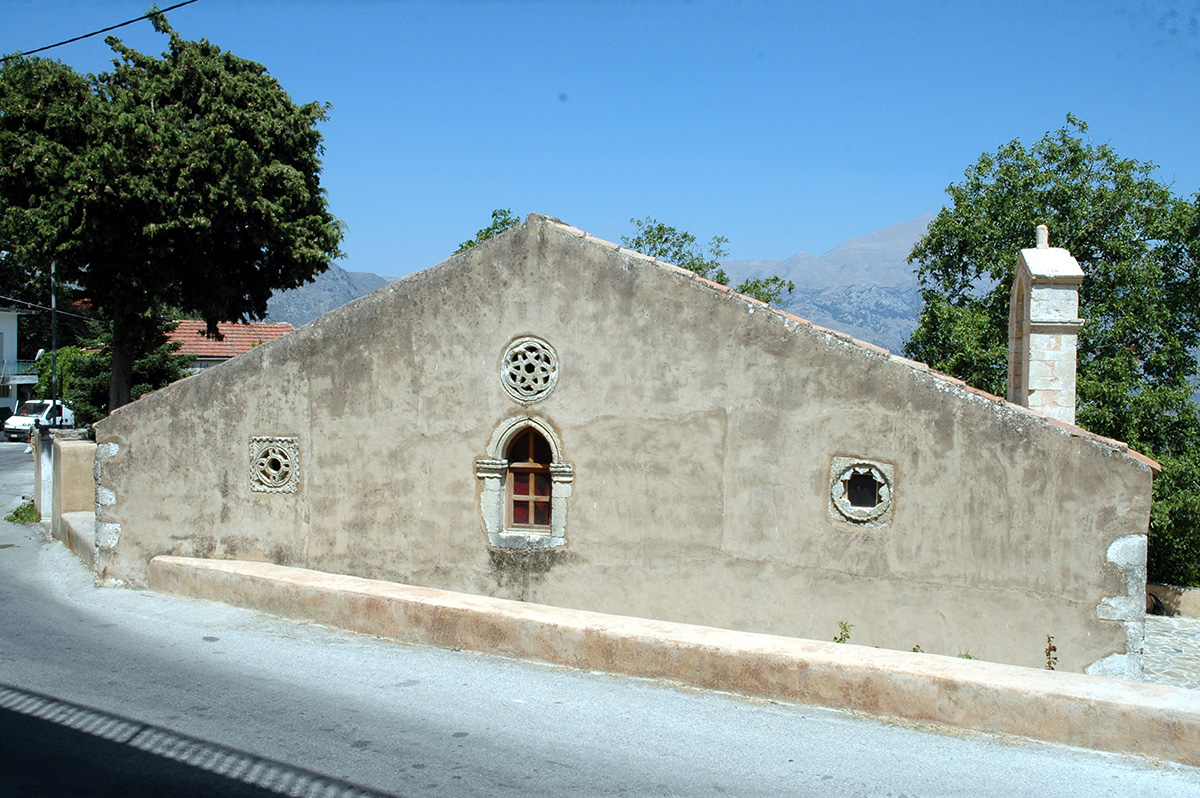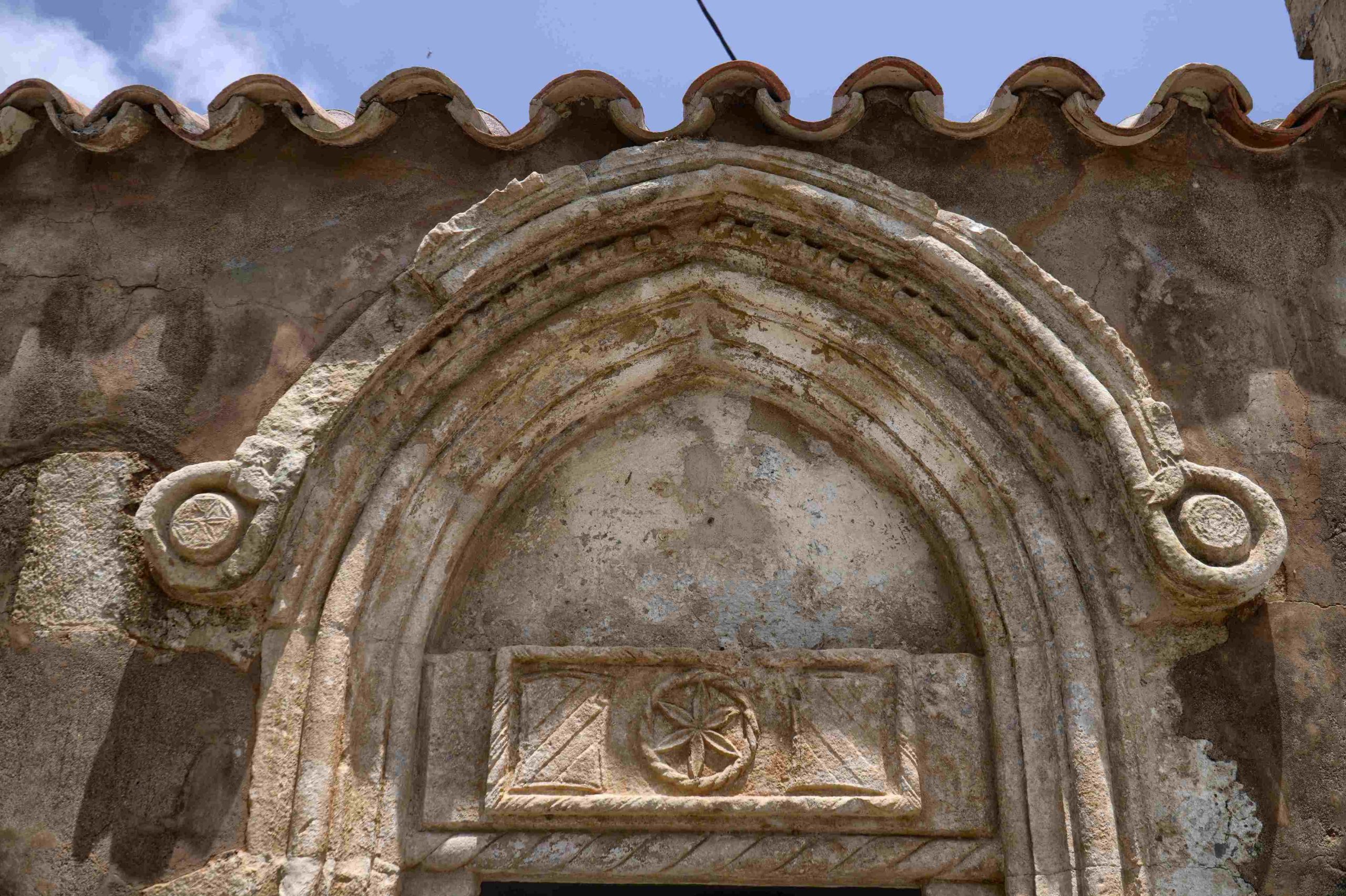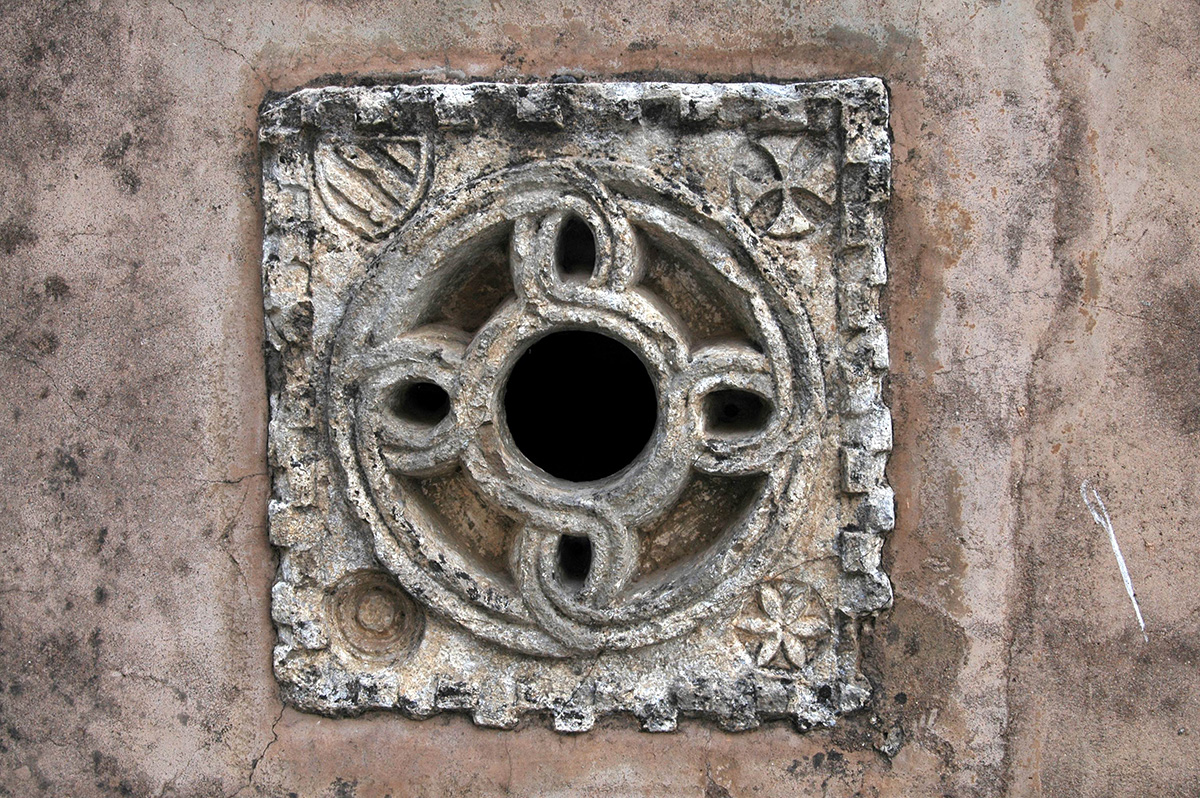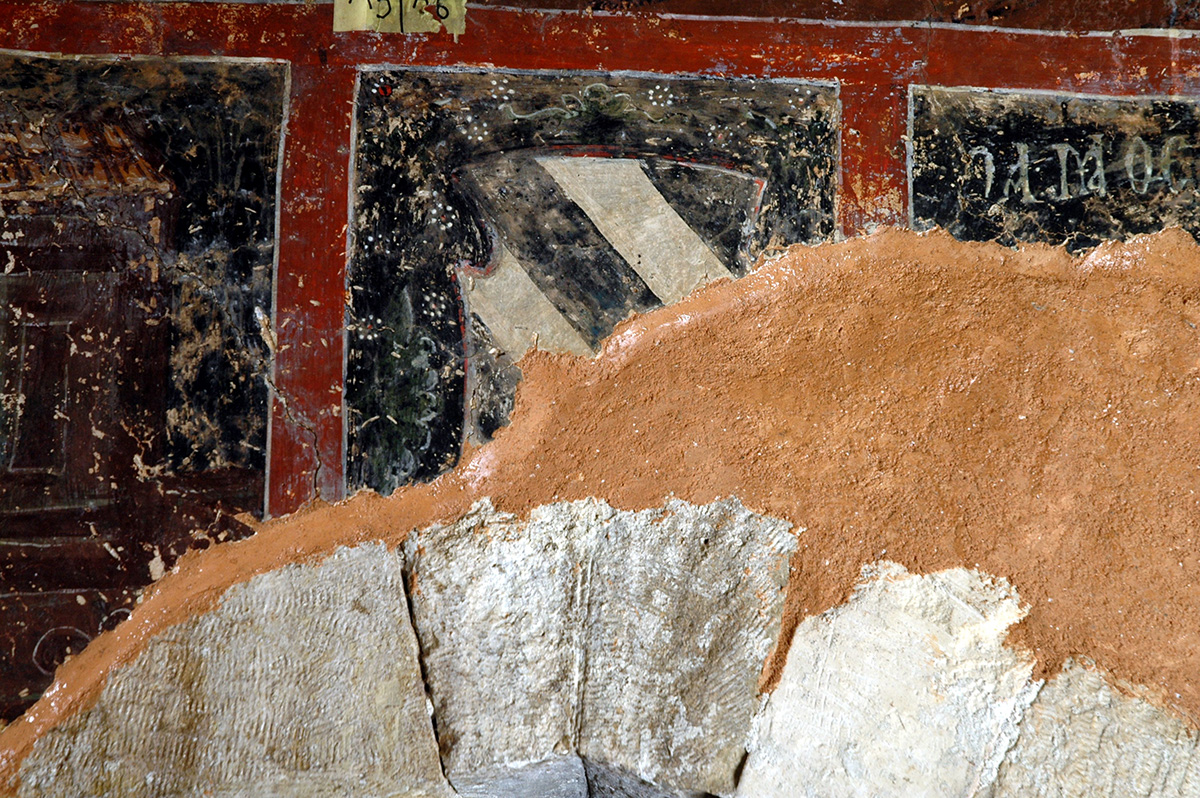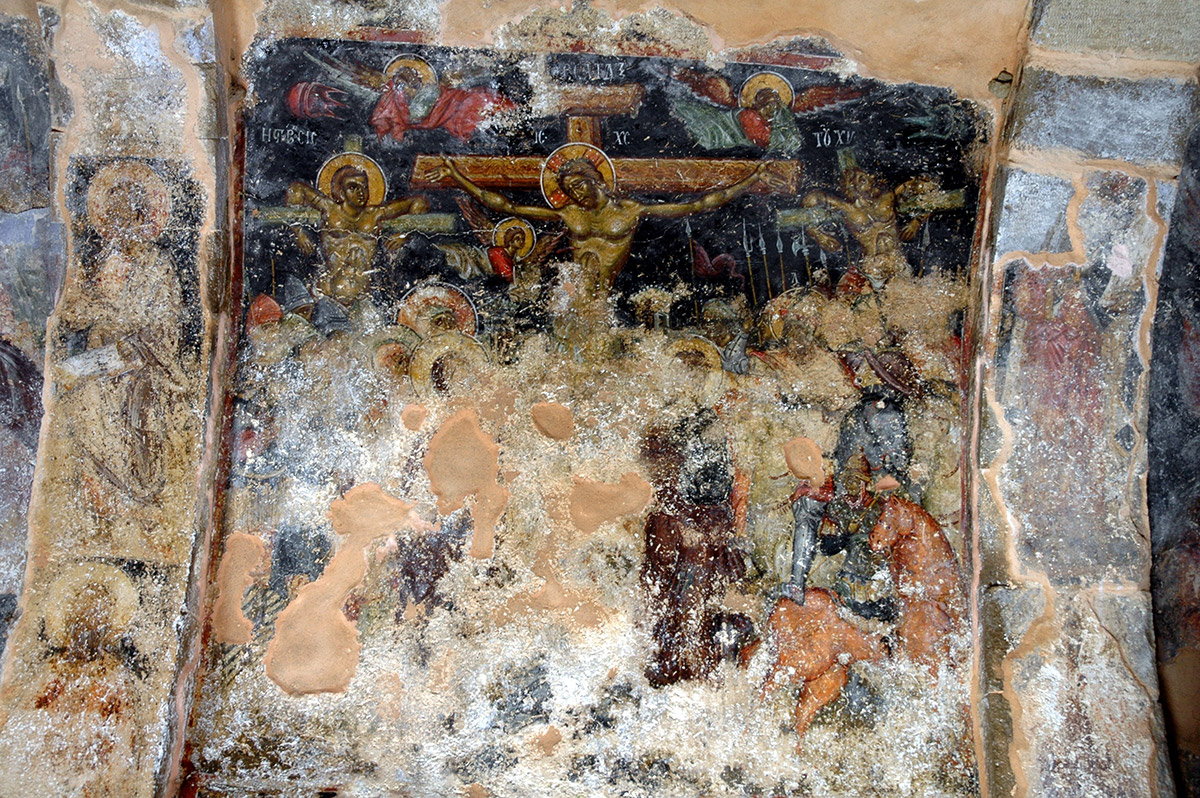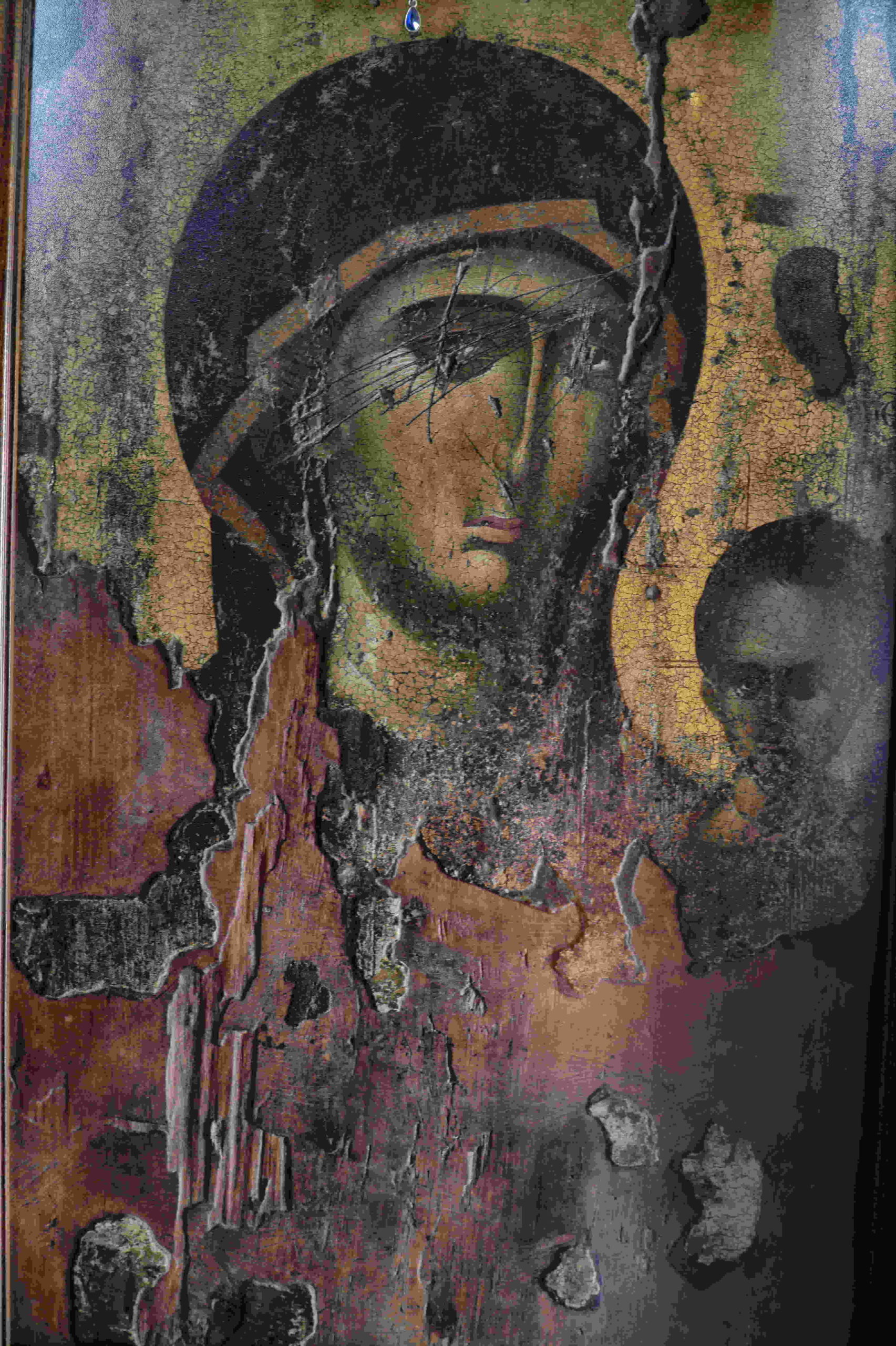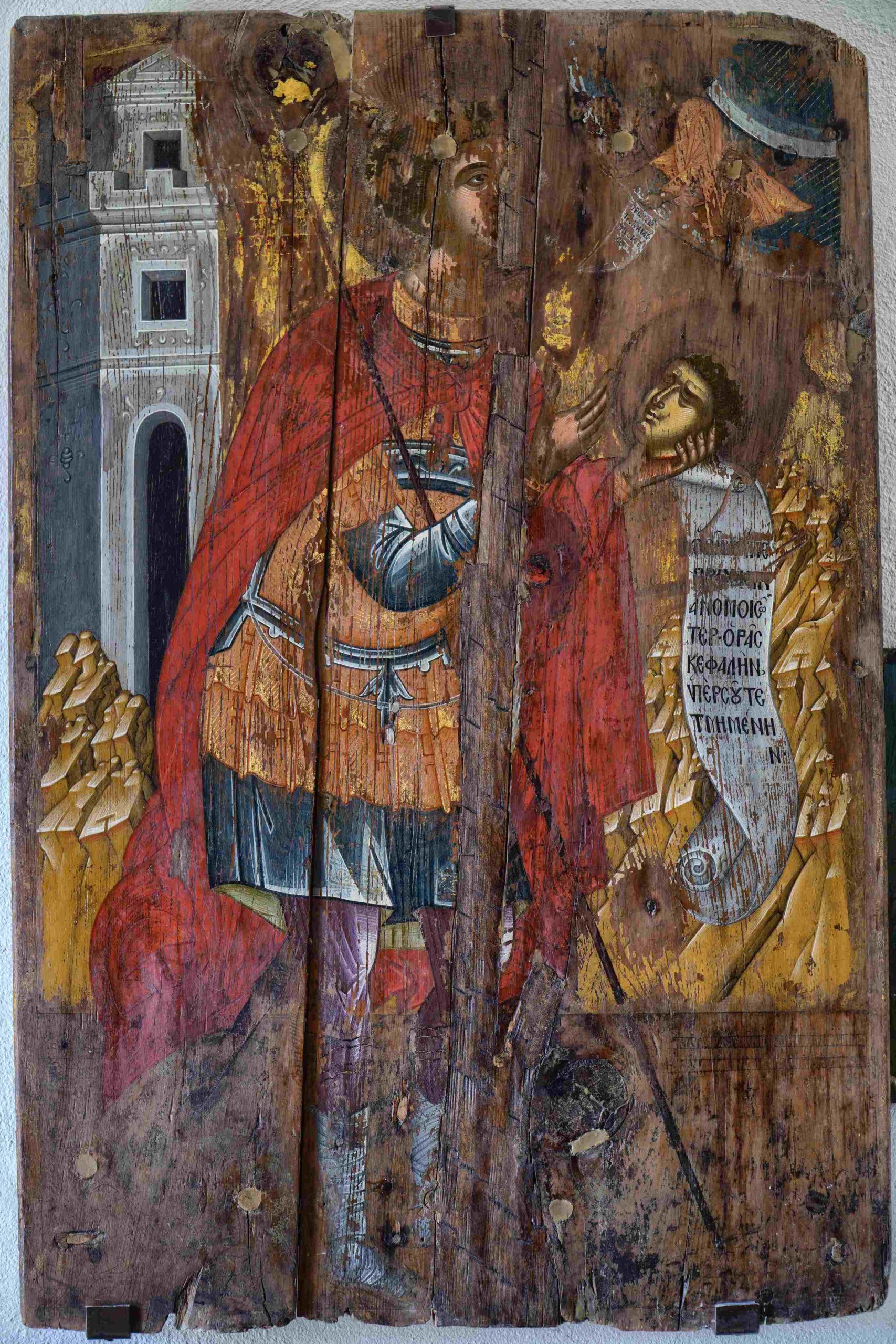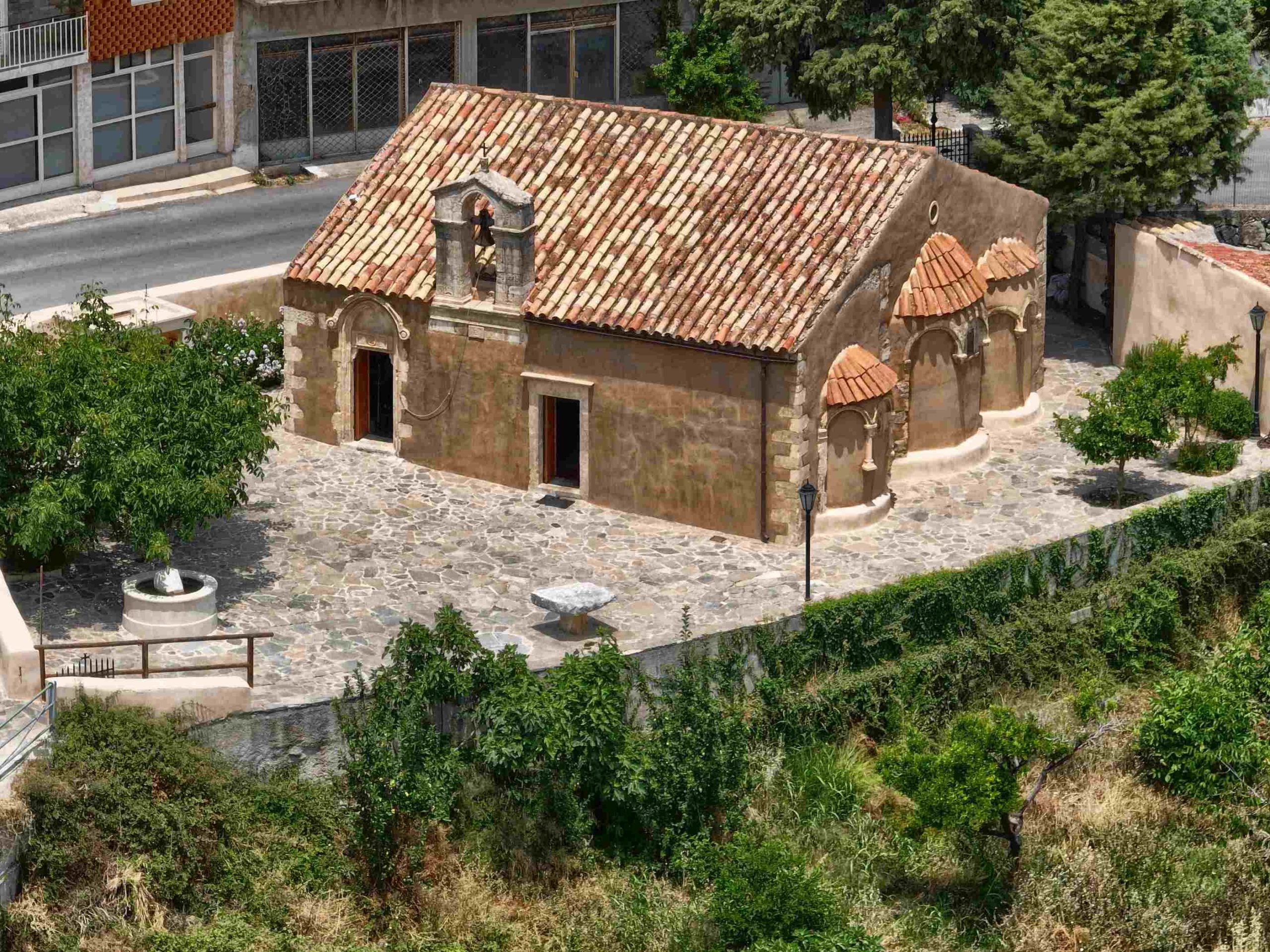
Aerial view of the church of Panagia (Virgin Mary) at Meronas.
Meronas, church of Panagia (Virgin Mary)
The church of Panagia (Dormition of the Virgin Mary) was built in two phases during the Venetian period. First, in the 14th century, a two-aisled church was built and then, in the 16th century, another aisle was added to the south side of the original building, giving the church the form of a three-aisled basilica. The original church's two aisles are covered with frescoes that reflect influences from both Constantinople and Western art. The later nave has no murals.
The door frame and one of the windows feature carved coats of arms belonging to the powerful Kallergis family. Additionally, painted coats of arms of the same family can be found in the main nave. A considerable number of old icons are exhibited in the church.
Bibliography
Μ. Μπορμπουδάκη, «Η τοιχογραφική διακόσμηση του ναού της Παναγίας στο χωριό Μέρωνας Αμαρίου: Νέα στοιχεία». Τιμητικός τόμος στον Ακαδημαϊκό Παναγιώτη Βοκοτόπουλο, Αθήνα 2015, σ. 417-425.
Maria Borboudaki, “The church of the Virgin of Meronas and the Kallergis Family”, Cahiers archéologiques 55 (2013-2014), σ. 105-118.
Dedicatory inscription
A fragment of a dedicatory inscription is preserved on the west wall of the central nave. The inscription mentions the dedication of the two aisles of the older church: the central one to the Virgin Mary and the northern one to Saint George. It also states that the founders of the church were a local lord and his wife. Although their names have not been preserved, they were probably Matthaios Kallergis and his second wife from the Corner family, whom Matthaios married in 1347.
Bibliography
Maria Borboudaki, “The church of the Virgin of Meronas and the Kallergis Family”, Cahiers archéologiques 55 (2013-2014), σ. 105-118.
Μανόλης Πατεδάκης, «Μια επιγραφή με ηγεμονική διάσταση: Επίγραμμα του Θεοδώρου Προδρόμου στο Βίβλος γενέσεως από την Παναγία στον Μέρωνα», Μανόλης Σ. Πατεδάκης – Κώστας Δ. Γιαπιτσόγλου (επιμ.), Μαργαρίται. Μελέτες στη Μνήμη του Μανόλη Μπορμπουδάκη, Κοινωφελές Ίδρυμα «Παναγία η Ακρωτηριανή» Ιεράς Μητροπόλεως Ιεραπύτνης και Σητείας, Σητεία 2016, σ. 328-359.
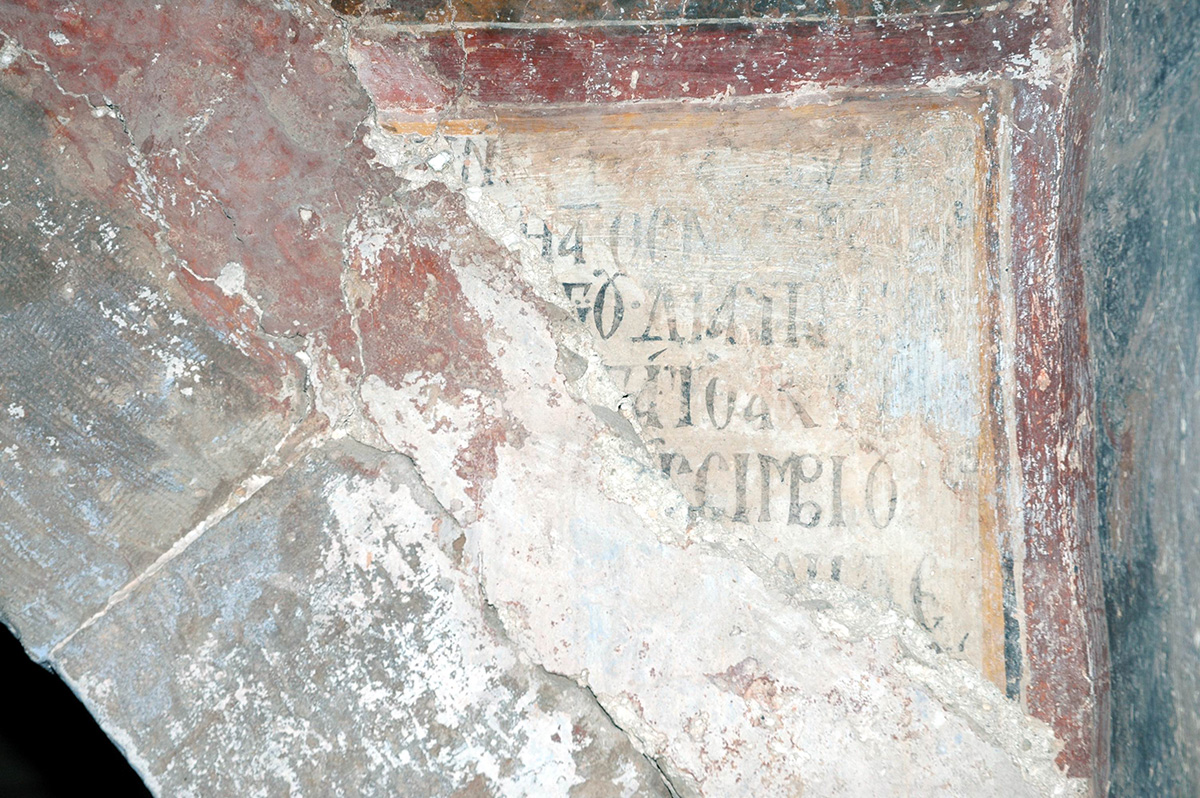
Dedicatory inscription.
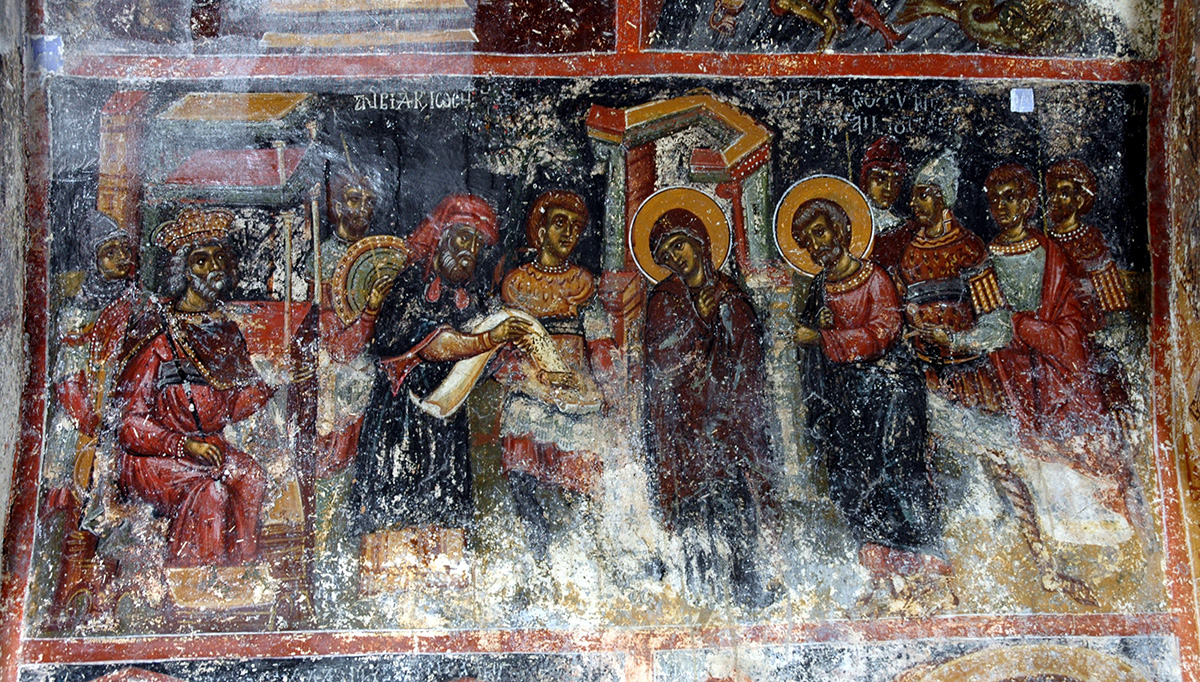
The Enrollment for Taxation.
Representation of the Enrollment for Taxation
A mural in the central aisle of the church depicts the Enrollment for Taxation, when Joseph and Mary had to go to Bethlehem to be registered according to the decree of the Roman Emperor. The mural depicts the moment of the registration. The Virgin Mary and Joseph are shown standing in three-quarters view, opposite them stands the scribe with the tools of his trade, ready to register them in his catalogues; behind him is the enthroned Cyrenius. Among the main figures are soldiers and, behind Joseph, his two sons. The subject of the Enrollment of Taxation is extremely rare. In Crete, it can only be found in the church of Panagia in Meronas and in the church of Panagia in Patsos in the Amari province. The wall-painting in the church of Panagia in Meronas has a clear iconographic relationship with the mosaic of the same subject in the Chora Monastery in Constantinople.
Bibliography
Μαρία Μπορμπουδάκη, «Η τοιχογραφική διακόσμηση του ναού της Παναγίας στο χωριό Μέρωνας Αμαρίου: Νέα στοιχεία». Τιμητικός τόμος στον Ακαδημαϊκό Παναγιώτη Βοκοτόπουλο, Αθήνα 2015, σ. 417-425.
Saint Romanos Sklepodioktis
Saint Romanos Sklepodioktis, the one who cures sklepa, an epidemic disease of equines, is depicted on the north wall of the north aisle of the church: a standing haloed man holds the head of a grey horse; a second man, barely visible, bends in front of the horse and lifts its leg. On the wall above the horse's back hang the farrier's tools, a hammer and a pincer. The depiction bears the inscription POMANO[C]CΚΛΕΠΟΔΙΟΚΤΙC (Romanos who removes sklepa). The healer Saint Romanos is also known from other representations in which he is shown holding sharp tools. His portrayal in a farrier's workshop recalls of the depictions of Saint Eligios, a well-known saint of the Catholic Church and horse healer, and indicates Western influences on the church's iconographic program.
Bibliography
Νικολέττα Πύρρου, «Θεραπευτής και πεταλωτής: Νέα στοιχεία για τον Ρωμανό το Σκλεποδιώκτη από τη μνημειακή ζωγραφική της Κρήτης», ΔΧΑΕ 34, σ. 167-178.
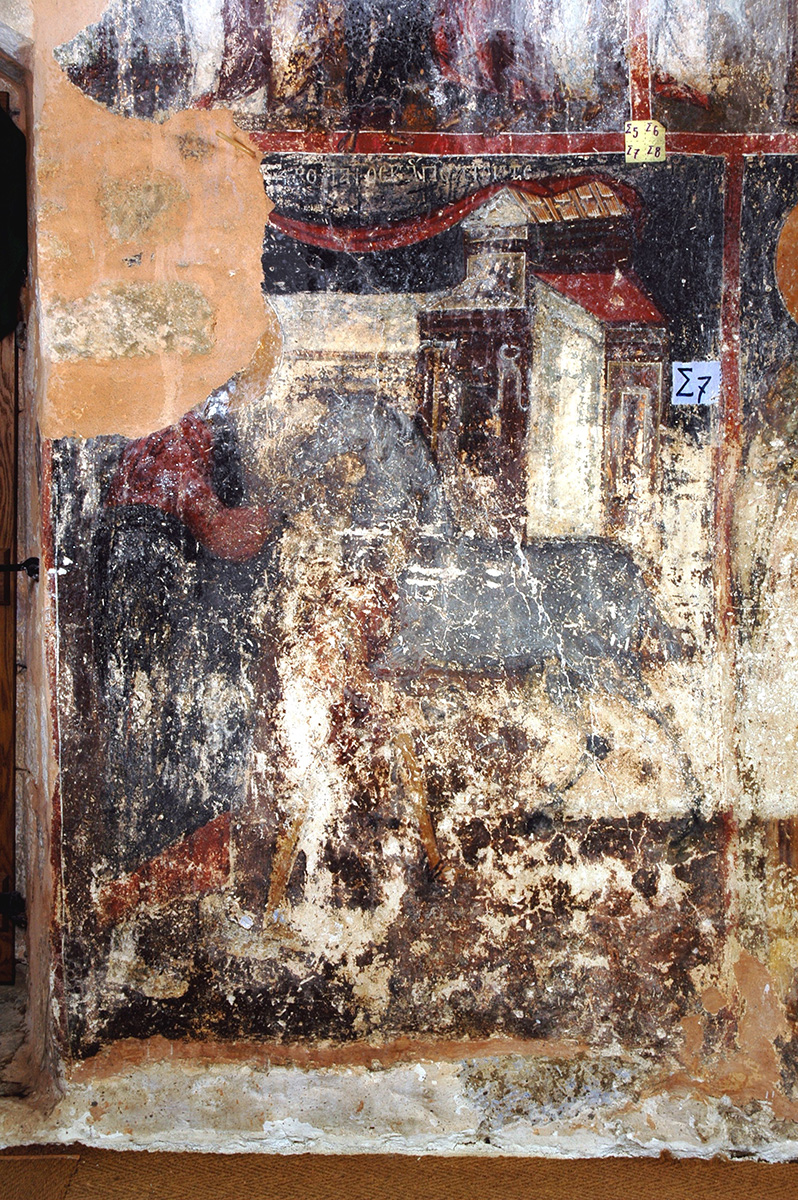
Saint Romanos Sklepodioktis.
Photo Gallery
- East side of the church at the beginning of the 20th century. Photo by G. Gerola.
- Western view.
- Lintel with carved coats of arms.
- Carved oculus with the coat of arms of Kallergis family.
- Γραπτό οικόσημο Καλλεργών.
- The Crucifixion.
- Portable icon depicting Panagia (Virgin Mary) in the type of Hodegetria.
- Portable icon depicting Saint George the Kephalophoros (who is bearing his head).

